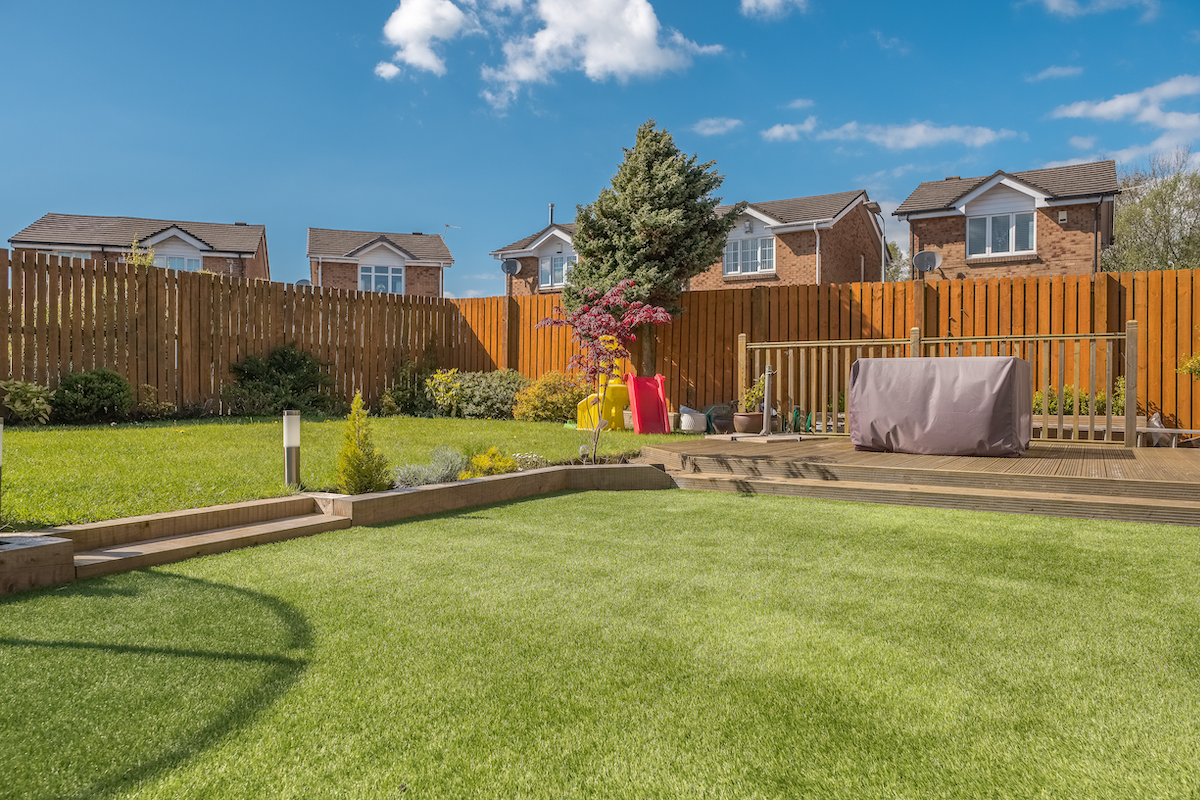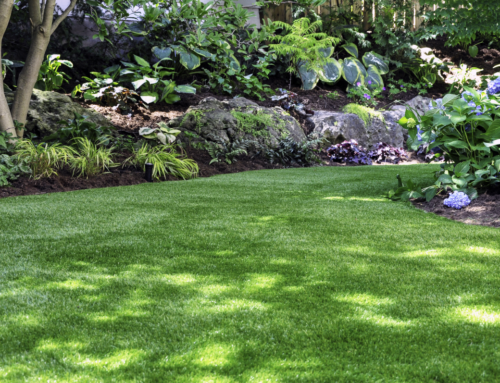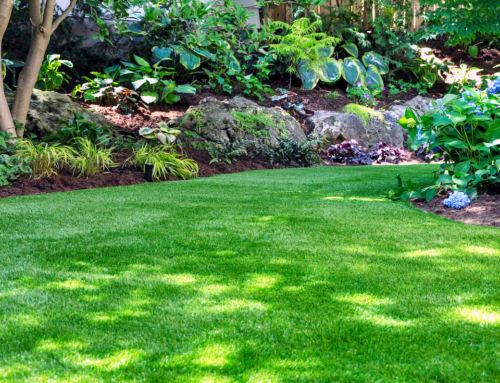Last Updated on January 16, 2023 by ReTurf
Artificial grass has come a long way in recent years, making it a popular choice among homeowners and business owners for landscaping design. The benefits of synthetic grass include a lush, green lawn without the need for constant maintenance and upkeep. And with more homeowners opting for used artificial turf, it’s possible to reap the benefits of an artificial grass lawn at a more affordable price.
However, one question that is frequently asked by homeowners is whether it’s possible to “install artificial turf on concrete.” This guide will provide an overview of the considerations, challenges, and best practices for installing artificial turf above concrete surfaces.
Considerations for Installing Artificial Grass over Concrete
As you might expect, one of the main concerns when installing artificial turf on concrete is the lack of drainage. A professionally-installed artificial grass lawn will normally have a drainage system that allows rain, snow, melting ice and other water to pass through—often even more efficiently than a natural grass lawn.

However, if you simply lay artificial turf down over a paved area, for example on a concrete deck or balcony, or around a pool or hot tub, this can lead to water collecting between the concrete and the artificial turf, resulting in mold and mildew growth, standing water, and puddles.
Again, it’s typical for professionally-installed synthetic grass to drain more efficiently because of how well the base is prepared. However, when installing artificial turf over concrete, the water does not have a place to escape, making drainage an issue.
Some suggest adding a layer of sand for drainage, however, this can wash away over time, leaving just the concrete behind.
Additionally, the firmness of turf laid on top of a concrete or cement surface doesn’t provide the soft, “cushiony” feel that artificial grass installed over a more typical base has. This would make it less suitable for high-impact physical activities, such as running or jogging.
For these reasons, the best way to install artificial turf over concrete is with a permeable base layer that allows water to drain and adds cushion beneath the grass.
So now, let’s look at some possible options for creating this type of base layer:
Tips for Installing Artificial Turf over Concrete
If removing the concrete surface is not an option, there are ways to improve the functionality of artificial turf over concrete. One possible solution is to install drainage tiles between the pavement and the grass to allow for drainage as well as air circulation. This will help with mold and mildew growth and also provide a cushiony surface for sports and other physical activities.
Depending on the specifics of your project, it may also be possible to install synthetic grass over a gravel base such as crushed stone, which will also provide a layer of drainage while still providing a cushiony surface. This type of base can also be used to help create height differences within the lawn, which can help with drainage and create a more aesthetically-pleasing landscape.

As far as the firmness of the concrete, your installer will likely suggest a layer of padding to soften the surface, and possibly a thick artificial turf product for added cushioning. This could be a foam or rubber layer between the concrete and the grass. The foam should be thick enough to provide a cushiony feel while still allowing water to pass through it and into the underlying drainage area.
Advantages of Synthetic Grass over Concrete
Installing synthetic grass on top of concrete surfaces can enhance the overall appearance and functionality of the area. For example, synthetic grass can provide a more appealing and slip-resistant surface on a concrete pool deck.
Additionally, installing an artificial lawn with adequate cushioning on top of a solid surface can provide a softer landing for children and pets to play and run on. Not to mention, synthetic turf can also provide a cleaner and healthier playing surface, as it is much less likely to accumulate dust and germs.
You also get all the benefits of artificial grass, such as low-maintenance care and—especially with used artificial grass—an affordable price. Durable, professional-grade used synthetic turf, reclaimed and recycled from stadiums and sports fields, can last for many years and still look top-notch.

The Bottom Line
While there are some considerations and potential issues to keep in mind when installing artificial turf over concrete, it is still a viable option for many property owners. By working with a professional installer and taking the necessary steps to promote proper drainage and cushioning, artificial turf can provide a lush and inviting lawn—even above a concrete surface. While it’s best not to install new or used artificial grass directly on top of concrete, installing it over concrete can be done with adequate planning and preparation.
If you have any questions about your project—whether it’s large or small—we encourage you to reach out to the artificial grass experts at ReTURF. Our team of experienced turf professionals have the knowledge and experience to guide you through the process and ensure that your artificial turf installation is a success. Give us a call at (828) 518-5787 or click here to send us an email.



